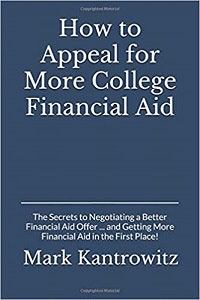As a journalist who has covered college admission for many years, I’ve seen firsthand how students and families struggle to make sense of the financial aid award letters they get from colleges.
At a charter school in New Orleans, for example, I saw a student who didn’t initially understand that even though she was being offered $32,000 in scholarship aid from her dream school – a private liberal arts college – she still would have been in major debt upon graduation since that amount only covered one year of tuition.
In another case, I saw an immigrant father ask why his son couldn’t enroll in his first-choice college – even though the family didn’t have enough to cover all four years – and then just try to hustle up the rest of the money they needed to cover sophomore year. And he would have taken that route had a financial aid adviser not discouraged him by warning him that sophomore year comes quicker than you think – and how it would be better to settle on a second-choice school that was offering a better financial aid package.
I can’t help but wonder if these situations – and the many others just like them that play out every year – might have turned out differently if these students and their parents had known something about the art of appeal.
At least that’s what I’ve been thinking since I read a new book from financial aid guru Mark Kantrowitz, titled How to Appeal for More College Financial Aid: The Secrets to Negotiating a Better Financial Aid Offer … and Getting More Financial Aid in the First Place!
“The more you know, the better position you are in to negotiate,” Kantrowitz writes. “So, do your research in advance.”
Indeed, the book is chock-full with both simple and sophisticated insights for anyone interested in learning more about how to squeeze as much money out of a college as possible within the framework of the law. That would include students, parents and financial aid advisers.
I myself am finding tremendous value in the book as I try to help my 19-year-old stepson from a former marriage secure a good financial aid offer. His mother passed away recently and his father was disabled after being shot. He also spent some time in foster care.
According to Kantrowitz’s book, these circumstances all represent the kinds of things that the college financial aid administrator should know.
“Generally, college financial aid administrators are more likely to make an adjustment when a special circumstance is due to factors beyond the family’s control, such as job loss or disability related expenses, as opposed to discretionary choices,” Kantrowitz writes.
The book goes into great detail about just what constitutes a “special circumstance.” It involves things such as furloughs or paycheck reductions, but not lifestyle decisions like going to the casino or cable TV. The book also stresses the importance of being able to document that the circumstance is real – preferably through an independent third party. So instead of just talking about having an unusually high child care bill, for instance, it would be better to have a copy of the actual bill.
The book also mentions a variety of other circumstances that students – including adult students – can try to use to get a better offer. For example, if your spouse has abused you or been sent to jail or prison but you’re still legally married, you can seek to have your status changed from married to unmarried for purposes of financial aid, the book states.
The book is not only for those facing hard times – far from it. There’s plenty of nuggets of wisdom, tips and tricks for those who are more well o or who run their own business – things such as changing a business’s tax status or taking a voluntary salary reduction to lower your income for financial aid purposes.
Not everyone is happy with the book. For instance, Charlie, the first person to review the book on Amazon.com – and who gave it just one star – lamented how disappointed he was to learn that the book concedes that “successful appeals are rare.”
“The bulk of this book is how to position yourself in advance — not an appeal — to get more need-based aid and charts on which schools give more aid,” Charlie complains. “Very, very little is on how to get more aid after receiving a disappointing awards letter.”
But if you think about it, Charlie’s complaint is actually a compliment of sorts.
The main complaint I have is that the book doesn’t have footnotes. It does have a rather lengthy set of appendixes – 90 pages worth, in fact – and I’m not convinced people will bother reading them.
Shortcomings aside, I would still give the book five stars.
Many people will only apply for college once in their lives. And when they do, this relatively easy-to-read book helps ensure that they’ll get the best financial aid offer possible.
This article will appear in the February 21, 2019 edition of Diverse.


















